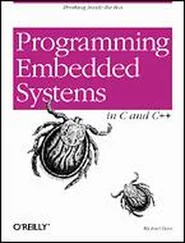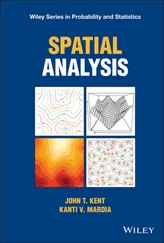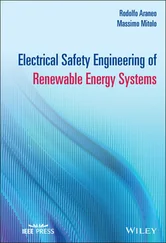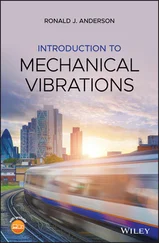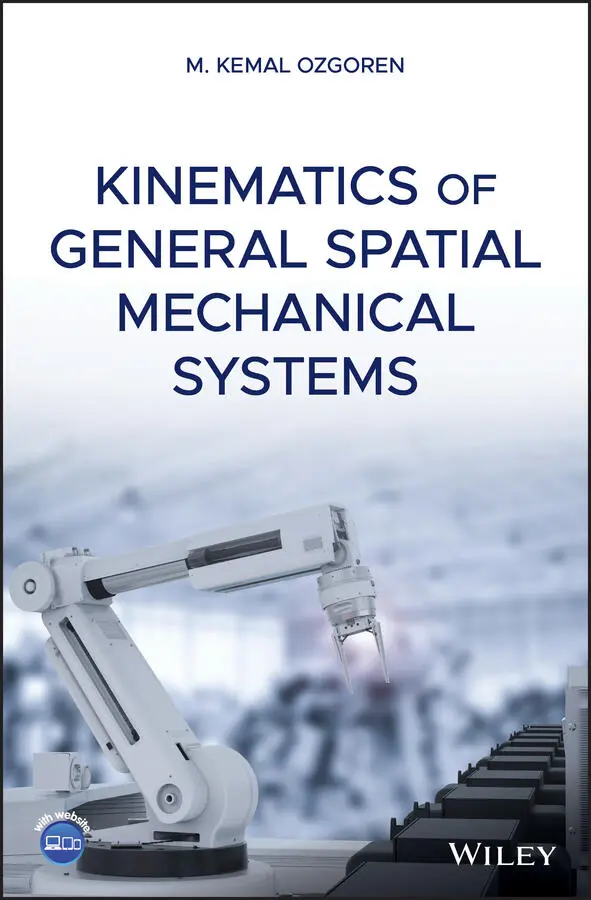
1 Cover
2 Preface
3 Acknowledgments
4 List of Commonly Used Symbols, Abbreviations, and Acronyms
5 About the Companion Website
6 1 Vectors and Their Matrix Representations in Selected Reference FramesSynopsis 1.1 General Features of Notation 1.2 Vectors 1.3 Vector Products 1.4 Reference Frames 1.5 Representation of a Vector in a Selected Reference Frame 1.6 Matrix Operations Corresponding to Vector Operations 1.7 Mathematical Properties of the Skew Symmetric Matrices 1.8 Examples Involving Skew Symmetric Matrices
7 2 Rotation of Vectors and Rotation MatricesSynopsis 2.1 Vector Equation of Rotation and the Rodrigues Formula 2.2 Matrix Equation of Rotation and the Rotation Matrix 2.3 Exponentially Expressed Rotation Matrix 2.4 Basic Rotation Matrices 2.5 Successive Rotations 2.6 Orthonormality of the Rotation Matrices 2.7 Mathematical Properties of the Rotation Matrices 2.8 Examples Involving Rotation Matrices 2.9 Determination of the Angle and Axis of a Specified Rotation Matrix 2.10 Definition and Properties of the Double Argument Arctangent Function
8 3 Matrix Representations of Vectors in Different Reference Frames and the Component Transformation MatricesSynopsis 3.1 Matrix Representations of a Vector in Different Reference Frames 3.2 Transformation Matrices Between Reference Frames 3.3 Expression of a Transformation Matrix in Terms of Basis Vectors 3.4 Expression of a Transformation Matrix as a Direction Cosine Matrix 3.5 Expression of a Transformation Matrix as a Rotation Matrix 3.6 Relationship Between the Matrix Representations of a Rotation Operator in Different Reference Frames 3.7 Expression of a Transformation Matrix in a Case of Several Successive Rotations 3.8 Expression of a Transformation Matrix in Terms of Euler Angles 3.9 Position of a Point Expressed in Different Reference Frames and Homogeneous Transformation Matrices
9 4 Vector Differentiation Accompanied by Velocity and Acceleration ExpressionsSynopsis 4.1 Derivatives of a Vector with Respect to Different Reference Frames 4.2 Vector Derivatives with Respect to Different Reference Frames and the Coriolis Transport Theorem 4.3 Combination of Relative Angular Velocities and Accelerations 4.4 Angular Velocities and Accelerations Associated with Rotation Sequences 4.5 Velocity and Acceleration of a Point with Respect to Different Reference Frames
10 5 Kinematics of Rigid Body SystemsSynopsis 5.1 Kinematic Description of a Rigid Body System 5.2 Position Equations for a Kinematic Chain of Rigid Bodies 5.3 Velocity Equations for a Kinematic Chain of Rigid Bodies 5.4 Acceleration Equations for a Kinematic Chain of Rigid Bodies 5.5 Example 5.1 : A Serial Manipulator with an RRP Arm 5.6 Example 5.2 : A Spatial Slider‐Crank (RSSP) Mechanism
11 6 Joints and Their Kinematic CharacteristicsSynopsis 6.1 Kinematic Details of the Joints 6.2 Typical Lower Order Joints 6.3 Higher Order Joints with Simple Contacts 6.4 Typical Multi‐Joint Connections 6.5 Rolling Contact Joints with Point Contacts 6.6 Rolling Contact Joints with Line Contacts 6.7 Examples
12 7 Kinematic Features of Serial ManipulatorsSynopsis 7.1 Kinematic Description of a General Serial Manipulator 7.2 Denavit–Hartenberg Convention 7.3 D–H Convention for Successive Intermediate Links and Joints 7.4 D–H Convention for the First Joint 7.5 D–H Convention for the Last Joint 7.6 D–H Convention for Successive Joints with Perpendicularly Intersecting Axes 7.7 D–H Convention for Successive Joints with Parallel Axes 7.8 D–H Convention for Successive Joints with Coincident Axes
13 8 Position and Motion Analyses of Generic Serial ManipulatorsSynopsis 8.1 Forward Kinematics 8.2 Compact Formulation of Forward Kinematics 8.3 Detailed Formulation of Forward Kinematics 8.4 Manipulators with or without Spherical Wrists 8.5 Inverse Kinematics 8.6 Inverse Kinematic Solution for a Regular Manipulator 8.7 Inverse Kinematic Solution for a Redundant Manipulator 8.8 Inverse Kinematic Solution for a Deficient Manipulator 8.9 Forward Kinematics of Motion 8.10 Jacobian Matrices Associated with the Wrist and Tip Points 8.11 Recursive Position, Velocity, and Acceleration Formulations 8.12 Inverse Motion Analysis of a Manipulator Based on the Jacobian Matrix 8.13 Inverse Motion Analysis of a Redundant Manipulator 8.14 Inverse Motion Analysis of a Deficient Manipulator 8.15 Inverse Motion Analysis of a Regular Manipulator Using the Detailed Formulation
14 9 Kinematic Analyses of Typical Serial ManipulatorsSynopsis 9.1 Puma Manipulator 9.2 Stanford Manipulator 9.3 Elbow Manipulator 9.4 Scara Manipulator 9.5 An RP2R3 Manipulator without an Analytical Solution 9.6 An RPRPR2 Manipulator with an Uncustomary Analytical Solution 9.7 A Deficient Puma Manipulator with Five Active Joints 9.8 A Redundant Humanoid Manipulator with Eight Joints
15 10 Position and Velocity Analyses of Parallel ManipulatorsSynopsis 10.1 General Kinematic Features of Parallel Manipulators 10.2 Position Equations of a Parallel Manipulator 10.3 Forward Kinematics in the Position Domain 10.4 Inverse Kinematics in the Position Domain 10.5 Velocity Equations of a Parallel Manipulator 10.6 Forward Kinematics in the Velocity Domain 10.7 Inverse Kinematics in the Velocity Domain 10.8 Stewart–Gough Platform as a 6UPS Spatial Parallel Manipulator 10.9 Delta Robot: A 3RS2S2 Spatial Parallel Manipulator
16 Bibliography Basic Publications Related Publications of the Author
17 Index
18 End User License Agreement
1 Chapter 1 Figure 1.1 A reference frame.
2 Chapter 2 Figure 2.1 Rotation of a vector about an axis. Figure 2.2 Half rotations of the same vector about different axes.
3 Chapter 3 Figure 3.1 A vector observed in two different reference frames. Figure 3.2 Direction angles between two reference frames. Figure 3.3 A point observed in two different reference frames. Figure 3.4 Two positions of a cube.
4 Chapter 4 Figure 4.1 An aircraft observed in an earth fixed reference frame. Figure 4.2 A manipulator with six revolute joints.Figure 4.3 A point observed in two different reference frames.
5 Chapter 5Figure 5.1 Two rigid bodies connected with a joint.Figure 5.2 Revolute, prismatic, and spherical joints.Figure 5.3 A serial manipulator with an RRP arm.Figure 5.4 Two optional poses of the manipulator for the same location of R . Figure 5.5 Zero‐offset version of the manipulator with an RRP arm.Figure 5.6 A spatial slider‐crank mechanism.Figure 5.7 Projected views of the two closure poses for the same crank angle.Figure 5.8 Projected views of the two closure poses for the same slider positi...
6 Chapter 6Figure 6.1 Bodies connected by one and two joints.Figure 6.2 A general single‐axis joint.Figure 6.3 Two versions of a universal joint.Figure 6.4 A spherical joint.Figure 6.5 A plane‐on‐plane joint.Figure 6.6 A line‐on‐plane joint.Figure 6.7 A point‐on‐plane joint.Figure 6.8 A point‐on‐surface joint.Figure 6.9 A fork‐on‐surface joint.Figure 6.10 A triangle‐on‐surface joint.Figure 6.11 A surface‐on‐surface joint.Figure 6.12 A curve‐on‐surface joint.Figure 6.13 A curve‐on‐curve joint.Figure 6.14 A cone‐on‐cone joint.Figure 6.15 A cone‐on‐cylinder joint.Figure 6.16 A cone‐on‐plane joint.Figure 6.17 A cylinder‐on‐cylinder joint.Figure 6.18 A cylinder‐on‐plane joint.Figure 6.19 An RRRSP mechanism.Figure 6.20 A two‐link mechanism with three point‐on‐plane joints.Figure 6.21 A spatial cam mechanism with elliptic and spherical cams.Figure 6.22 A spatial cam mechanism that allows rolling without slipping.
Читать дальше




